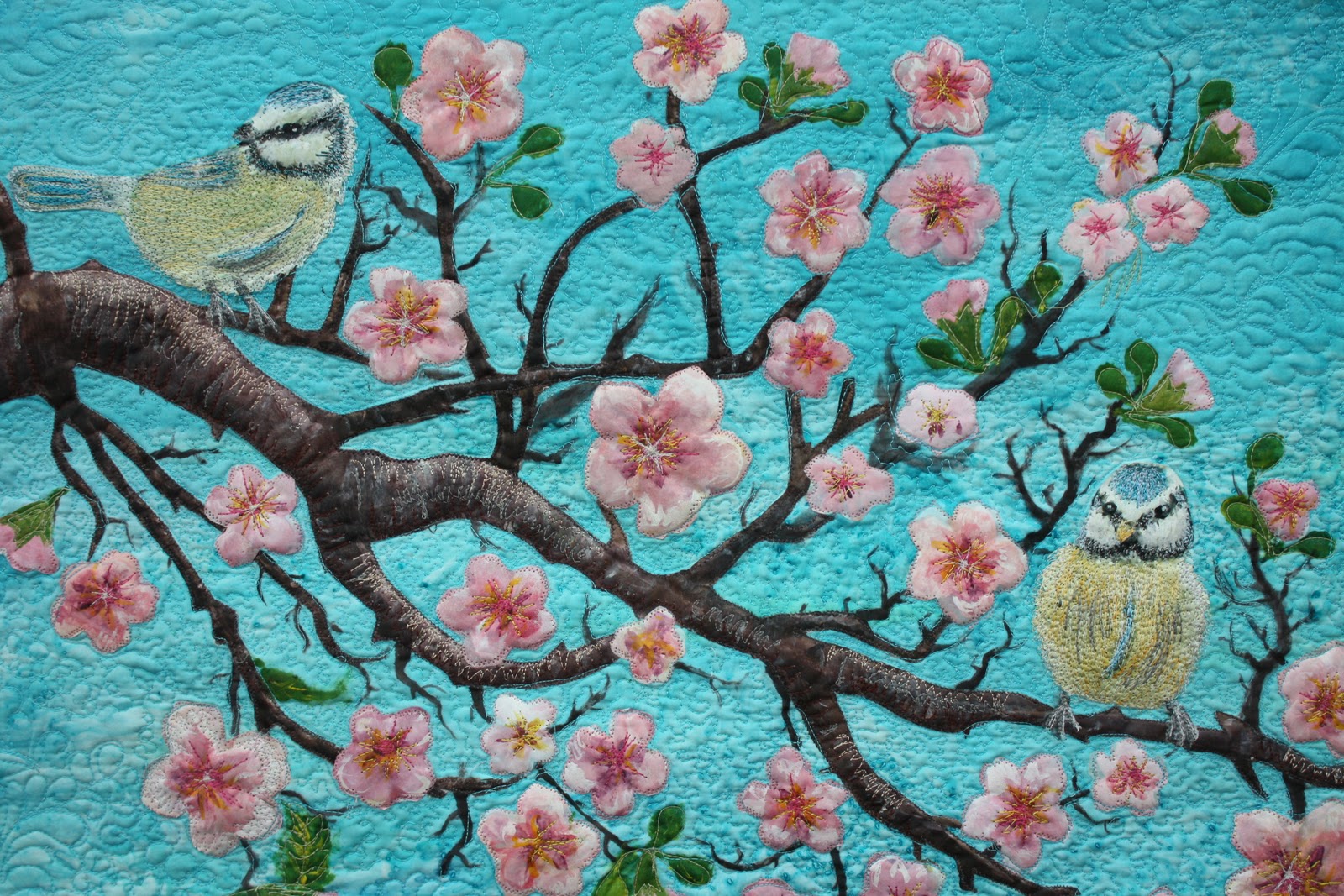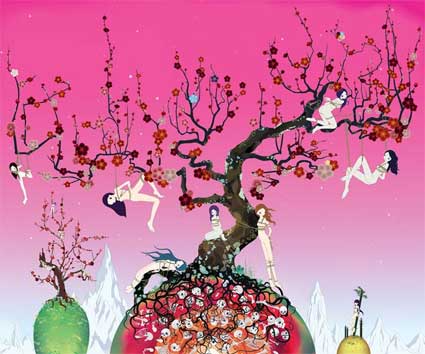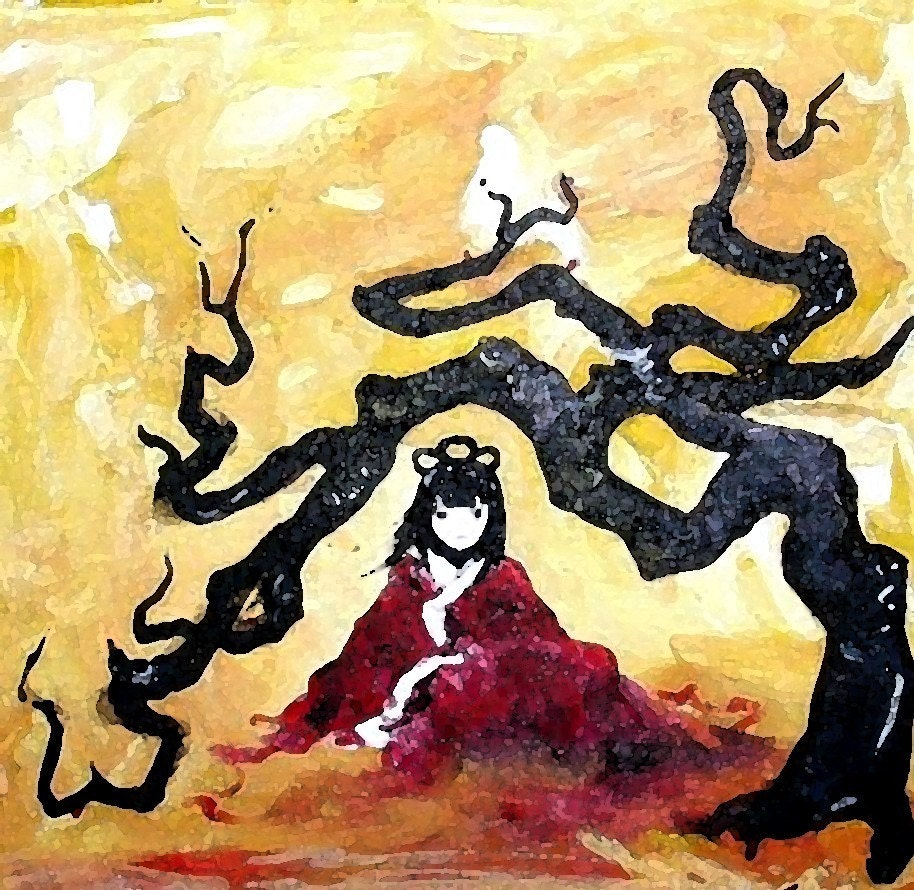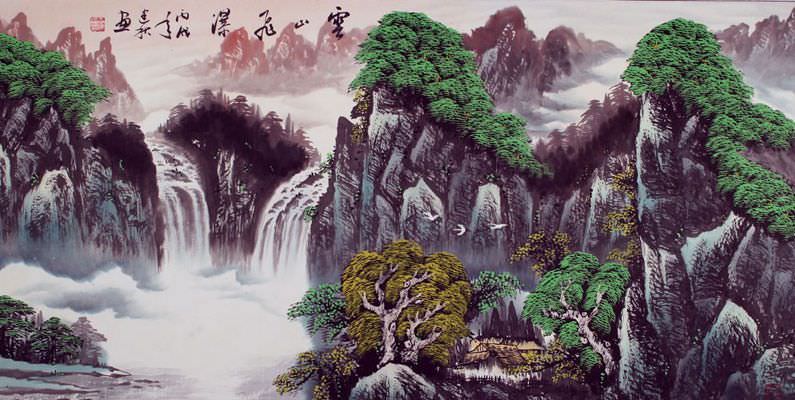Asian Art Biography
Source:- Google.com.pkChang Dai-chien was born on May 10, 1899 in Nei-chiang, Szechwan as Chuan Chi, the ninth child of a wealthy family who had converted to Roman Catholicism. Resisting his family's efforts to push him into a business career, Chang briefly entered a Buddhist monastery before beginning serious study of Chinese calligraphy and painting at the age of 19. After an extended visit to Kyoto, Japan, Chang settled in Shanghai in 1919 to study with prominent artists Tseng Hsi (c.1861-1930) and Li Jui-ching (1867- 1920). In a training method typical among art students in China, Chang made many arduous copies of artistic masterworks, beginning to develop his legendary (and notorious) ability to recreate works from diverse periods.
Because of his family wealth, Chang first entered the Chinese artistic community as an amateur painter and connoisseur. The collapse of several family businesses in 1925 deprived Chang of his income and compelled him to begin selling his art work. His first exhibition of 100 paintings in 1926 was a great success and launched his career. The start of the Sino-Japanese War in 1937 began a period of war and revolution that repeatedly disrupted Chang's artistic efforts, forcing him into flight several times. In 1939 he found refuge in the remote desert outpost of Tun-huang, where he spent more than two years copying the legendary murals in the Caves of the Thousand Buddhas.
Leaving China in the wake of the Civil War of 1949, Chang sojourned in Hong Kong, Taiwan, India and Argentina before settling in 1954 into a 30-acre compound outside Sao Paolo, Brazil that he named the "Garden of Eight Virtues." Chang continued to exhibit his art in the US and Europe, traveling to Paris in 1956 for a breakthrough show of his paintings at the Musee d'Art Moderne. Chang's meeting with Pablo Picasso during this trip was given considerable attention in the press as a meeting of the masters of Western and Eastern art. A dam construction project in the mid-1960s that would flood his home caused Chang to leave Brazil. California had impressed Chang during his numerous trips to the state, the first of which was in 1954. Chang moved to the Monterey Peninsula in 1967, eventually a home in Carmel and another on the scenic 17-mile drive. Chang relocated to Taiwan in 1976, spending the last seven years of his life painting and creating his garden home known as the "Abode of Illusions." He never returned to California after 1979.
In addition to his prized original works, Chang has become equally infamous for his recreations of Chinese masterpieces. His copies span 1,000 years of Chinese art and demonstrate a virtuoso talent for emulating, and even improving upon, the work of painters before him. Today many of these forgeries, still attributed to others, hang alongside Chang originals in museums worldwide. An article in the Washington Post Sunday Magazine on January 19, 1999 examined the controversy surrounding the reputed 10-th century Chinese painting The Riverbank owned by the Metropolitan Museum of New York, believed by some to be Chang forgery.
Chang's artistic legacy is immense, controversial and complicated. Beyond the difficulty posed by a 'life spent in nearly perpetual exile and travel, Chang was a highly social personality who enjoyed his fame and actively contributed to the creation of an heroic persona. As a young artist he adopted the posture of bearded sage, reveling in unconventionality and romanticism, the beginning of a life-long process to create a unique aura that often overshadowed his artistic efforts. The exhibition Chang Dai-chien in California will present an often overlooked element of Chang's legacy, demonstrating his status as a truly global artist.
Unquestionably one of the most important Chinese painters of the Twentieth Century, Chang Daichien has been compared to Picasso in many exhibition essays and catalogs. That analogy is often accompanied by evidence of their 'summit' in 1956 at Picasso's Mediterranean villa, La California, but is meant to more generally suggest the breadth of the artist's fame, unparalleled productivity and stylistic variety, and charismatic personality.1 Unique in the mastery of historical styles dating back to the 9th Century, reintroduction of brilliant color with painterly modeling, and grand synthesis of these traditions with aspects of Euro-American Impressionism and Abstract Expressionism, Chang Dai-chien is a singular giant of Chinese painting.
Yet even though the artist lived half of his career in the West and a decade in California, his work remains virtually unknown in the American artworld except in the Chinese American community and among scholars. This obscurity is especially surprising in light of the high visibility afforded Asian American artists including Isamu Noguchi, Chang Dai-chien's contemporary (1904-1988), and contemporary artist Hung Liu. Because ink painting is segregated academically and rarely presented in American museums, there is a widespread lack of familiarity about its traditions, aesthetics and practitioners. Perhaps as few non-Chinese can read inscriptions, rapid or casual appreciation is limited for many. James Cahill has written that Chinese paintings can appear "small and flat and hard to penetrate" to Westerners, in contrast with the seeming "forcefulness and immediacy" of European paintings; conversely, Cahill adds that Chinese painting experts sometimes complain about European painting lacking variety in brushwork.2 Chang Dai-chien felt quite differently, protesting "some people complain that Chinese landscapes are plain while the trees are flat. But this is absolutely false.3 Even though his work is resolutely rooted in Chinese painting traditions, Chang Dai-chien felt "there is no rigid line of demarcation between Chinese painting and Western painting," except perhaps "in the media and materials of the painter" and "in regional divergence in custom.
Asian Art aIslamic Art Calligraphy And Architecture Designs Patterns Wallpapers Desktop Wallpapers Hd Calligraphy Wallpapers Calligraphy Canvas Wallpapers Canvas

Asian Art aIslamic Art Calligraphy And Architecture Designs Patterns Wallpapers Desktop Wallpapers Hd Calligraphy Wallpapers Calligraphy Canvas Wallpapers Canvas

Asian Art aIslamic Art Calligraphy And Architecture Designs Patterns Wallpapers Desktop Wallpapers Hd Calligraphy Wallpapers Calligraphy Canvas Wallpapers Canvas

Asian Art aIslamic Art Calligraphy And Architecture Designs Patterns Wallpapers Desktop Wallpapers Hd Calligraphy Wallpapers Calligraphy Canvas Wallpapers Canvas

Asian Art aIslamic Art Calligraphy And Architecture Designs Patterns Wallpapers Desktop Wallpapers Hd Calligraphy Wallpapers Calligraphy Canvas Wallpapers Canvas
Asian Art aIslamic Art Calligraphy And Architecture Designs Patterns Wallpapers Desktop Wallpapers Hd Calligraphy Wallpapers Calligraphy Canvas Wallpapers Canvas
Asian Art aIslamic Art Calligraphy And Architecture Designs Patterns Wallpapers Desktop Wallpapers Hd Calligraphy Wallpapers Calligraphy Canvas Wallpapers Canvas

Asian Art aIslamic Art Calligraphy And Architecture Designs Patterns Wallpapers Desktop Wallpapers Hd Calligraphy Wallpapers Calligraphy Canvas Wallpapers Canvas

Asian Art aIslamic Art Calligraphy And Architecture Designs Patterns Wallpapers Desktop Wallpapers Hd Calligraphy Wallpapers Calligraphy Canvas Wallpapers Canvas

Asian Art aIslamic Art Calligraphy And Architecture Designs Patterns Wallpapers Desktop Wallpapers Hd Calligraphy Wallpapers Calligraphy Canvas Wallpapers Canvas

Asian Art aIslamic Art Calligraphy And Architecture Designs Patterns Wallpapers Desktop Wallpapers Hd Calligraphy Wallpapers Calligraphy Canvas Wallpapers Canvas

Asian Art aIslamic Art Calligraphy And Architecture Designs Patterns Wallpapers Desktop Wallpapers Hd Calligraphy Wallpapers Calligraphy Canvas Wallpapers Canvas

Asian Art aIslamic Art Calligraphy And Architecture Designs Patterns Wallpapers Desktop Wallpapers Hd Calligraphy Wallpapers Calligraphy Canvas Wallpapers Canvas

Asian Art aIslamic Art Calligraphy And Architecture Designs Patterns Wallpapers Desktop Wallpapers Hd Calligraphy Wallpapers Calligraphy Canvas Wallpapers Canvas

Asian Art aIslamic Art Calligraphy And Architecture Designs Patterns Wallpapers Desktop Wallpapers Hd Calligraphy Wallpapers Calligraphy Canvas Wallpapers Canvas

Asian Art aIslamic Art Calligraphy And Architecture Designs Patterns Wallpapers Desktop Wallpapers Hd Calligraphy Wallpapers Calligraphy Canvas Wallpapers Canvas

No comments:
Post a Comment